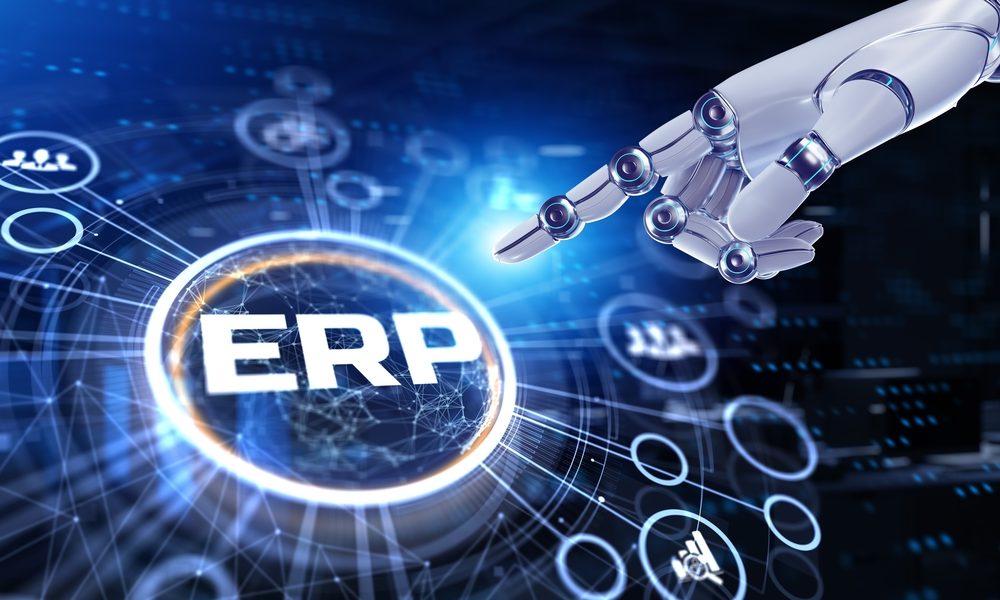
DATATEX AND BCENTRIQE: INTEGRATION OF AI INTO TEXTILE ERP
Podcast with Shannon McCarthy (Datatex USA, Head od Business Development) & Alakh Verma (BCentriqe.AI, Founder and CEO)
ENG

Welcome to our first podcast about Textile ERP and AI innovations where we will be exploring this fantastic synergy with a help of the two experts: Mr. Shannon McCarthy, Head of Business Development at Datatex, a world leading supplier of ERP solution for the textile industry and Mr. Alakh Verma-Founder & CEO at BCentriqe.AI, widely known AI/ML based Profitability Platform.
With the recent partnership forged between these two companies, we have a powerful alliance ready to drive transformative change in the industry.
As a start of our conversation, our two experts are giving us their short comments on this partnership, on this unique opportunity to explore the intersection of cutting-edge technology and industry-specific solutions.
SHANNON McCARTHY: This is a synergistic relationship between our Apparel and Textile expertise and BCentrique’s AI/ML expertise. It’s vital that your software provider is taking steps to combine your solution with AI. I was at a conference recently and an expert in the field said “AI isn’t going to replace you, but someone that knows how to leverage AI will.” I feel this relates to businesses as well. AI isn’t going to replace your business, but a company leverage AI may get your business.
ALAKH VERMA: The partnership is very strategic for us to enrich and empower Datatex ERP solution with the recent innovation in AI technologies for the benefit of our customers in Apparel and Textile sector. Someone asked me what’s the difference between BI and AI. Before I get to that answer, let me first try to explain the following:
What is Artificial Intelligence (AI)?
Artificial Intelligence is a simulation of human intelligence supported by data processed by computer promptly.
The main goal of AI is to analyze, adapt to new information and perform specific pre-programmed tasks without requiring someone’s supervision.
Key Features:
- Learning from data – AI can identify patterns from provided data without being pre-programmed to do so
- Problem solving –artificial intelligence is based on Multi modal data to predict and prescribe the right actions on complex data
What is Business Intelligence (BI)?
Business Intelligence refers to the use of software technologies to analyse and present historical data in a meaningful way to help with a specific task
- Focus on historic data – business intelligence tools focus on using historical data
- Business Intelligence platforms collect data from multiple sources and consolidate it into a centralized repository.
- Data Visualization: BI tools can report and present data in easy to easy to interpret formations
What are the key differences between AI and BI?
- Artificial intelligence is generally used for forward-looking predictions, leveraging predictive models and real time data analysis to automate tasks and create outcome forecasts. The best use cases for AI are supply chain management, personalization of customer experiences and to detect transaction anomalies for fraud prevention.
- Business Intelligence primarily focuses on the analysis of historical data, offering an insight into past performance and trends. This helps identify areas for improvement and to help provide data-driven insights and decision making.
Shannon, how are ERP functions changing with AI?
SHANNON McCARTHY: The integration of Artificial Intelligence (AI) into Enterprise Resource Planning (ERP) systems is transforming how organizations operate, offering numerous opportunities to enhance efficiency, decision-making, and overall business performance. Some key ways AI is changing ERP functions and the opportunities this presents to users:
- Enhanced Data Analysis and Decision-Making
Opportunities:
- Predictive Analytics: AI can analyze historical data to forecast future trends, such as sales projections, inventory needs, and customer demand. This allows businesses to make proactive decisions.
- Improved Accuracy: Machine learning models improve over time, resulting in increasingly accurate predictions and recommendations.
- Real-Time Insights: AI algorithms process data in real time, providing up-to-date insights and enabling quicker response to market changes.
- Process Automation
Opportunities:
- Automated Routine Tasks: AI can automate repetitive tasks such as invoice processing, order entry, and payroll, freeing up human resources for more strategic activities.
- Smart Workflows: AI-driven workflows can dynamically adjust to changing conditions, ensuring processes are efficient and reducing the need for manual intervention.
- Personalization and Customer Engagement
Opportunities:
- Enhanced Customer Service: AI-powered chatbots and virtual assistants provide immediate support and information to customers, improving service levels and satisfaction.
- Improved Supply Chain Management
Opportunities:
- Demand Forecasting: AI can predict demand with high accuracy, optimizing inventory levels and reducing costs associated with overstocking or stockouts.
- Supply Chain Optimization: AI can identify inefficiencies and suggest improvements in the supply chain, from procurement to delivery, enhancing overall efficiency.
- Predictive Maintenance and Asset Management
Opportunities:
- Preventive Maintenance: AI can predict equipment failures before they occur, scheduling maintenance activities at optimal times to prevent downtime and extend asset life.
- Resource Optimization: By analyzing usage patterns, AI can optimize resource allocation and asset utilization, reducing operational costs.
- Continuous Improvement and Innovation
Opportunities:
- Learning and Adaptation: AI systems continuously learn from data, improving their performance and adapting to new challenges without the need for manual updates.
- Innovation Enablement: By automating mundane tasks and providing deep insights, AI frees up time for employees to focus on innovation and strategic initiatives.
To conclude: The incorporation of AI into ERP systems presents significant opportunities for organizations to enhance their operations, make better-informed decisions, and remain competitive in an increasingly dynamic business environment. ERP users can expect improved efficiency, reduced costs, enhanced customer satisfaction, and the ability to quickly adapt to changing market conditions. As AI technology continues to evolve, its integration with ERP systems will likely become even more profound, further revolutionizing how businesses operate.
Alakh, how Generative AI based solution will help our customers in Textile and Apparel manufacturing?
ALAKH VERMA: Generative AI (Gen AI) can significantly impact the textile and apparel manufacturing industry by introducing innovative solutions and enhancing various processes:
Automated Design Generation: Gen AI can create unique and complex designs, patterns, and prints, reducing the time and effort required by human designers.
- Trend Prediction: By analyzing social media, fashion shows, and market trends, AI can predict upcoming fashion trends and suggest designs that align with these trends.
- Customization: AI enables the creation of personalized designs tailored to individual customer preferences, enhancing customer satisfaction and loyalty.
Production Efficiency:
Optimized Fabric Cutting: AI algorithms can optimize the cutting process, minimizing fabric waste and ensuring more efficient use of materials.
- Automated Quality Control: Gen AI can detect defects in fabrics and garments at various stages of production through image recognition and analysis, ensuring high-quality output.
- Supply Chain Optimization: AI can forecast demand more accurately, helping manufacturers manage inventory and reduce overproduction or stockouts.
- Waste Reduction: By optimizing design and production processes, Gen AI helps in reducing fabric waste and conserving resources.
Market Insights and Consumer Behavior:
Customer Sentiment Analysis: By analyzing customer reviews, social media, and purchase behavior, AI can provide insights into consumer preferences and feedback.
Personalized Marketing: AI-driven analytics can help in creating targeted marketing campaigns based on individual customer preferences and buying patterns.
Automation and Robotics:
Smart Factories: Integrating AI with robotics can automate repetitive tasks such as sewing, cutting, and assembling, increasing efficiency and reducing labor costs.
Predictive Maintenance: AI can predict when machinery is likely to fail or require maintenance, reducing downtime and improving productivity.
To conclude:By leveraging Gen AI, the textile and apparel manufacturing industry can enhance creativity, improve efficiency, promote sustainability, and provide better customer experiences. This integration not only drives innovation but also helps in maintaining a competitive edge in the fast-evolving fashion landscape.
Shannon, anything you’d like to say to Datatex customers about AI opportunities?
SHANNON McCARTHY: Yes, thank you. To our customers, you’re hearing more and more about the capabilities of AI, and you know your business best, so what ideas do you have? How we can collaborate on a project specific to your business? We are eager to turn your ideas into solutions.
If you are interested in watching the entire episode of our podcast, please click here and feel free to share your thoughts and ideas with us!

